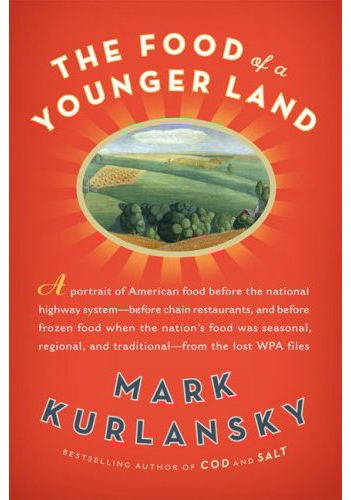 From Mark Kurlansky, the author of Cod and Salt, comes The Food of a Younger Land (Riverhead Books: 397 pages, $27.95)-- "A portrait of American food before the national highway system-- before chain restaurants, and before frozen food, when the nation's food was seasonal, regional, and traditional-- from the lost WPA files."
From Mark Kurlansky, the author of Cod and Salt, comes The Food of a Younger Land (Riverhead Books: 397 pages, $27.95)-- "A portrait of American food before the national highway system-- before chain restaurants, and before frozen food, when the nation's food was seasonal, regional, and traditional-- from the lost WPA files."
That's quite a mouthful.
Reading this book at a time in history when eating local, organic, seasonal food in an urban setting like San Francisco is either a genuine passion, a fashion statement for those wealthy enough to afford it, or somewhere in between, it's a pleasure to find a book that chronicles a time when eating in such a manner was not a matter of choice or politics, but rather one's only option.
Culled from boxes of manuscripts originally intended for publication nearly 70 years ago as America Eats, Kurlansky took on the task of finishing what the Federal Writer's Project under Katherine Kellock could not, thanks to an interruption of funding and interest created by a little something people called World War II.
Writers and would-be writers in the late 1930's were given the task of collecting recipes, statistics, and food lore from around the country to create a comprehensive tome of American foods and local culinary traditions, region by region, the likes of which had never been attempted. All paid for by the United States government and its Federal Writer's Project, an organization poet W. H. Auden, as Kurlansky states, referred to as "one of the noblest and most absurd undertakings ever attempted by any state."